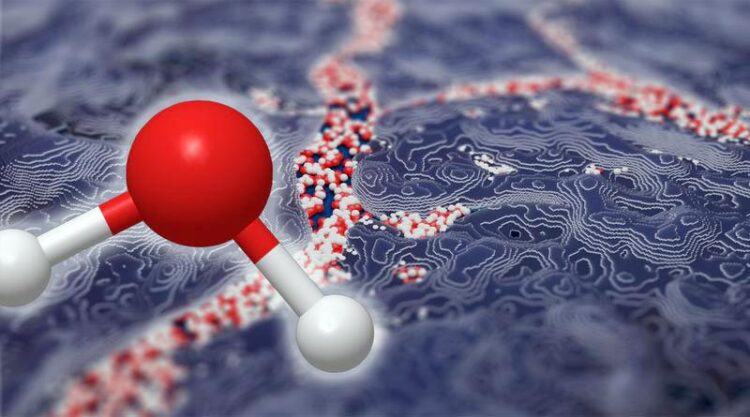10 Million Euros for Nanoscale Water Research

With 10 Mio. Euro, the European Research Council supports the "n-AQUA" collaboration
© Max Planck Institute for Polymer Research
European Research Council supports “n-AQUA” collaboration.
If water is spatially confined to nanometer dimensions, the so-called “continuum description” breaks down, and molecular details matter. There are indications that new and previously unknown phenomena appear. An understanding is quintessential for technological applications, such as water purification. A project (ERC Synergy Grant) by researchers from the Max Planck Institute for Polymer Research in Mainz (MPI-P), the CNRS and École normale supérieure – PSL in Paris (ENS-PSL), and the University of Cambridge now receives funding from the EU. The researchers will jointly investigate the quantum mechanical properties of ‘nano-water’ over the next six years.
Water is a unique liquid that makes the Earth the “blue planet”. For centuries, the partially anomalous properties of water have been studied: For example, water has its lowest density at 4 °C, and icebergs float on water. However, if water is strongly confined spatially, its properties change dramatically: water flows differently, and its phase diagram – which describes its aggregate states as a function of pressure and temperature – changes. Conventional theories can no longer explain this behavior of “nanoscale water”.
“The phenomena we want to investigate are crucial for a variety of technological applications,” says Mischa Bonn, director at the Max Planck Institute for Polymer Research. In his department, he uses laser spectroscopy to study the motion and alignment of water molecules. “For the desalination of water, for example, water molecules must flow through nanometer-sized pores. A better understanding on this length scale can make this process more efficient,” Bonn said.
Therefore, the EU-funded “n-AQUA” project – short for “Nanoscale water: A Quantum Understanding of Angstrom-scale transport” – will initially focus on studying and understanding such water confined to the nanoscale. The joint experiments rely on the expertise in nanometer confinement from Paris, the ability to ‘see’ water using advanced spectroscopies in Mainz, to be complemented with computer simulations from Cambridge to obtain a holistic picture of nanoscale water.
It is further planned to also investigate the flow properties of water: For example, can the confining material affect the flow properties by exchanging energy between the material and the water? Or do the electronic properties of the surrounding material have an influence? With this understanding, the researchers hope to be able to influence and shape the flow properties of water on a nanoscale in the future, which can then be used to improve technological processes.
The obtained Synergy Grant will fund the research for the next six years with a total amount of 10 M€. The grant, awarded by the ERC (European Research Council), is explicitly given for the collaboration of several Principal Investigators who, according to the ERC, “bring different skills and resources to tackle ambitious research problems.” The evaluation panel, in its assessment of the proposed work, stated: “This is an exemplary proposal in all aspects”.
Wissenschaftliche Ansprechpartner:
Prof. Dr. Mischa Bonn
Director, Max Planck Institute for Polymer Research
T: 06131 – 379 160
EMail: bonn@mpip-mainz.mpg.de
Weitere Informationen:
http://www.mpip-mainz.mpg.de – Website Max Planck Institute for Polymer Research
https://erc.europa.eu/news/erc-2022-synergy-grants-results – Press information of the ERC
Media Contact
All latest news from the category: Life Sciences and Chemistry
Articles and reports from the Life Sciences and chemistry area deal with applied and basic research into modern biology, chemistry and human medicine.
Valuable information can be found on a range of life sciences fields including bacteriology, biochemistry, bionics, bioinformatics, biophysics, biotechnology, genetics, geobotany, human biology, marine biology, microbiology, molecular biology, cellular biology, zoology, bioinorganic chemistry, microchemistry and environmental chemistry.
Newest articles

Properties of new materials for microchips
… can now be measured well. Reseachers of Delft University of Technology demonstrated measuring performance properties of ultrathin silicon membranes. Making ever smaller and more powerful chips requires new ultrathin…

Floating solar’s potential
… to support sustainable development by addressing climate, water, and energy goals holistically. A new study published this week in Nature Energy raises the potential for floating solar photovoltaics (FPV)…

Skyrmions move at record speeds
… a step towards the computing of the future. An international research team led by scientists from the CNRS1 has discovered that the magnetic nanobubbles2 known as skyrmions can be…





















